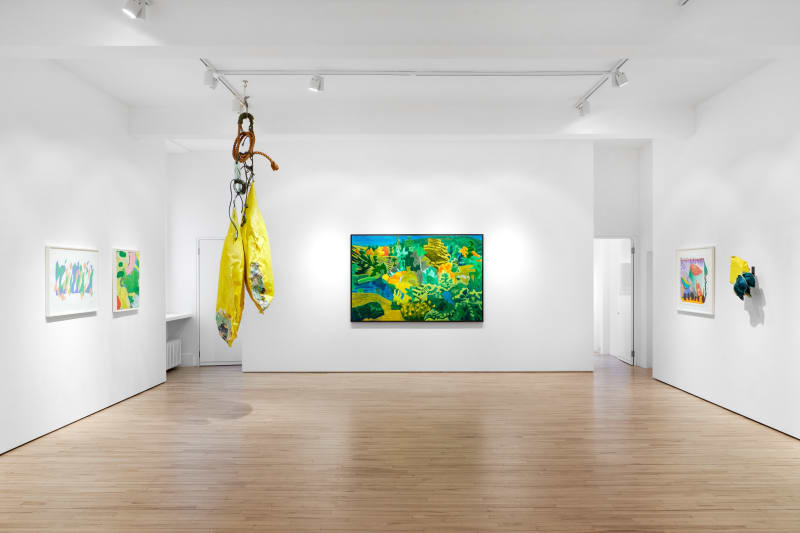We are delighted to announce our reopening following our temporary closure over the Covid-19 lockdown period. The group exhibition we will be presenting is a celebration of spring, summer, renewal, and the landscape – both real and imagined. The title refers to the 1934 Dylan Thomas poem The Force That Through the Green Fuse Drives the Flower, a powerful invocation of the spirit of energy and the will to recover and regrow, that exists in all of nature.
The show itself spans over 100 years of artistic endeavour – beginning with works from 1906 by Harry Phelan Gibb, a contemporary of Matisse and Gris, and championed by Gertrude Stein. The works exhibited by Phelan Gibb here have an optimistic, light-filled quality redolent of Cezanne or Raoul Dufy, yet have a distinct voice all of their own.
Chronologically the show continues via the pillars of David Hockney and Bridget Riley, perhaps the most important figurative and abstract painters respectively of their generation. In Hockney’s ‘Slow Rise’ (1993) we see an imagined and surreal landscape, seemingly shifting at each glance – as are the sharply defined forms in Riley’s ‘Sylvan’ (2000) and ‘Arcadia’ (2013), which draw upon and distil elements of nature into motif form. In the centre of the exhibition Adrian Berg’s large painting ‘Leighton Hall’ (1991) proves a tour-de-force in modern landscape painting at its most dynamic.
Driving further forward we present the work of established & respected artists at the height of their game – the abstracted figuration and boldly colourist works of Tim Braden and David Price, and the delicately rendered and highly complex surfaces of Luke Elwes’ watercolours, which Elwes makes both in and with the landscape, washing & infusing the paint with water from the Landermere marshes. Sitting alongside more figurative, but equally enigmatic and yet celebratory glass pieces by the legend of studio glass Sam Herman.
Works in sculpture by more recent graduate Egle Jauncems, and in painting by Michaela Yearwood-Dan, each combine the natural world with an inner sense of memory and culture. Jauncems’ ‘Limone’ sculptures playing with absurdities of scale and the art-historical associations of the subject, whilst Yearwood-Dan’s evocative and tactile paintings are interwoven with fragments of text that hint at her central themes of class, culture/race, gender, nature, loss and love.










